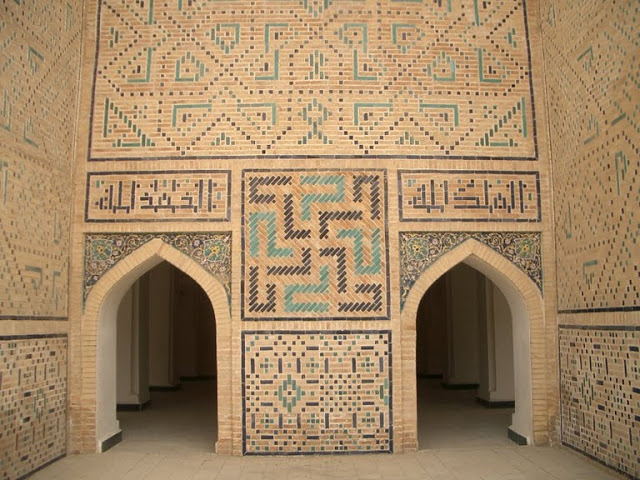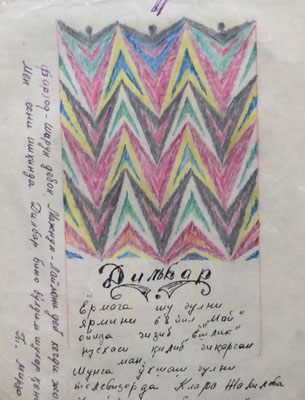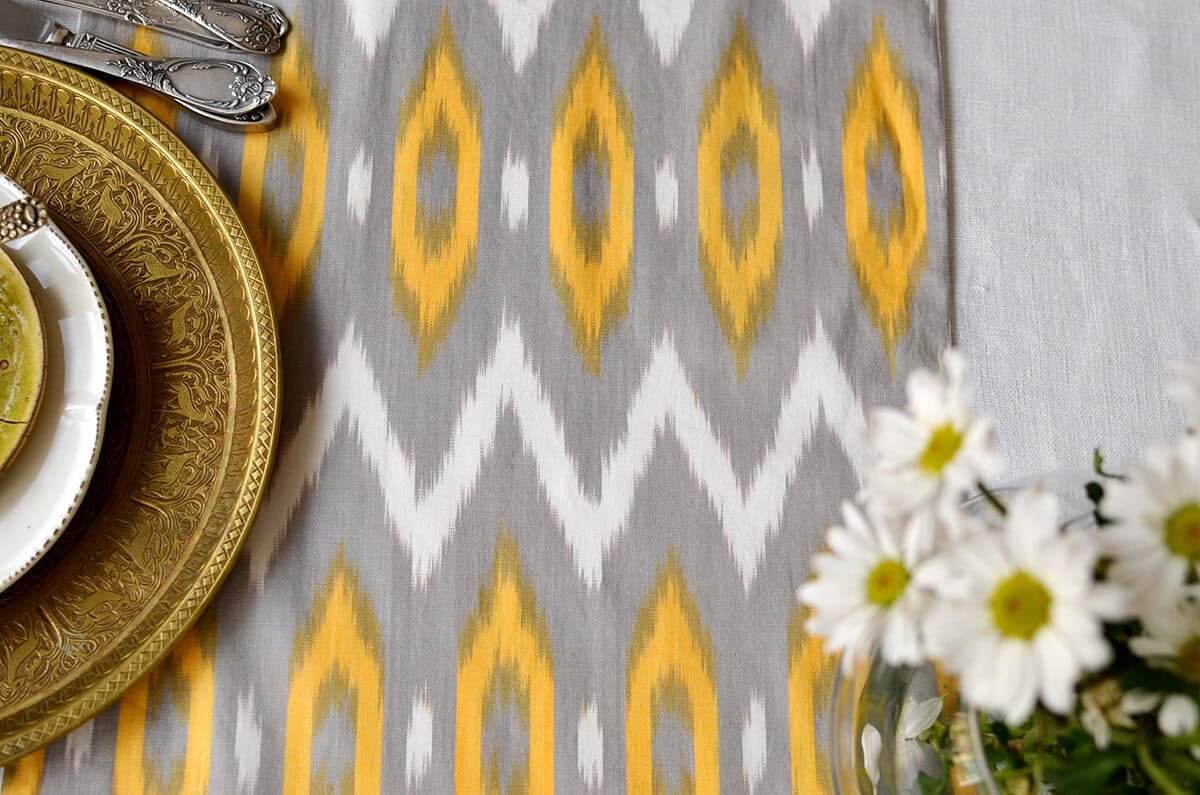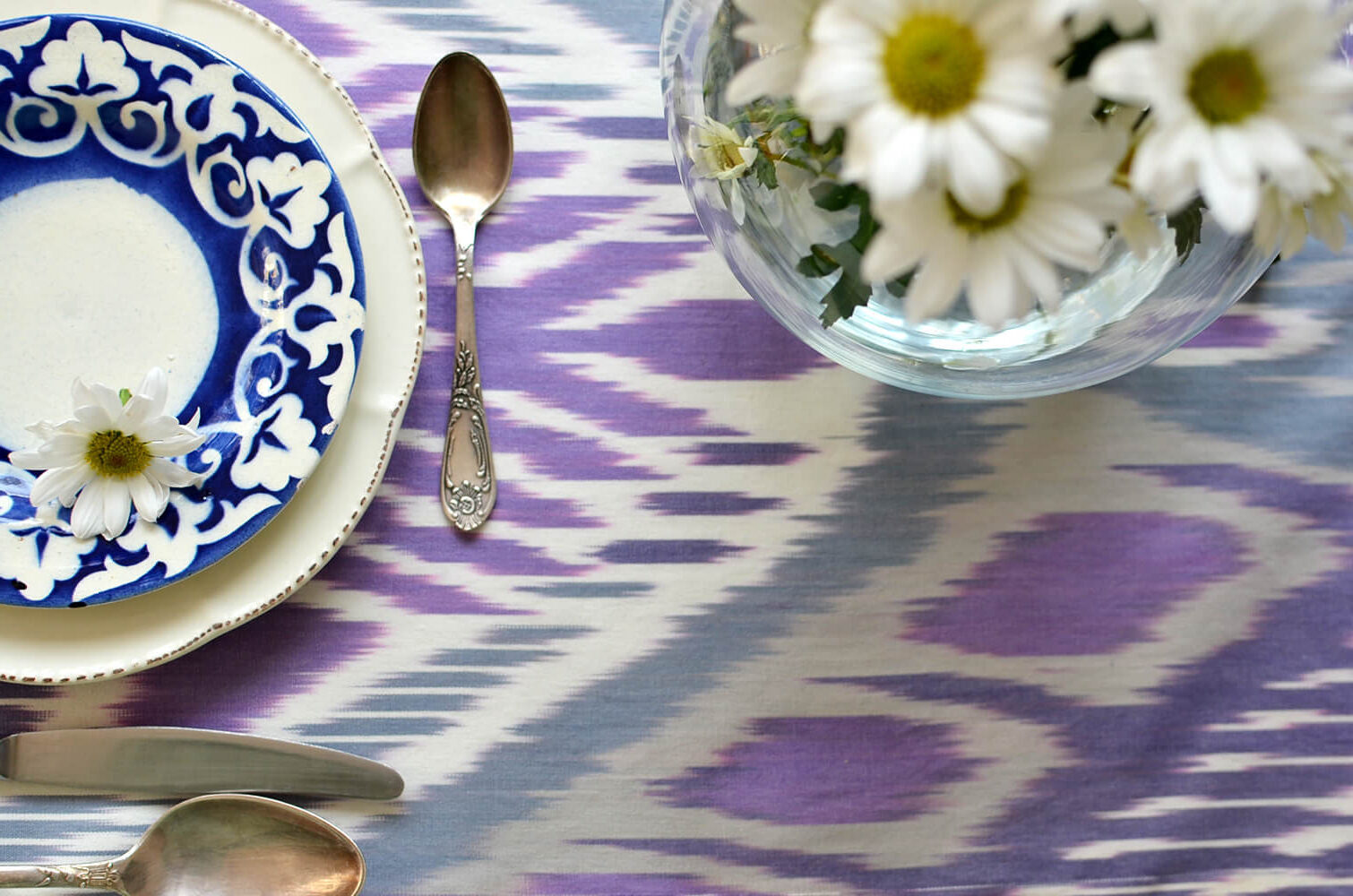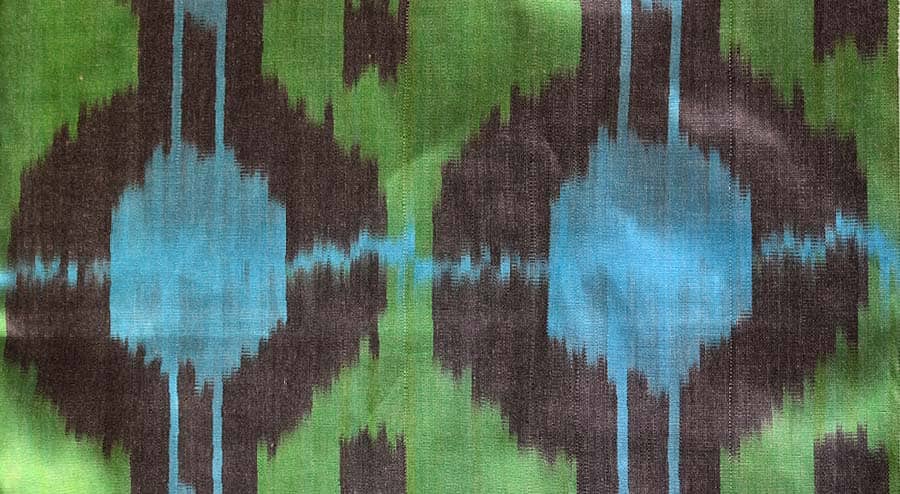
What is ikat design you see in so many fabrics?
Availability of Ikat fabric online created a lot of interest in these unique and noble textiles. The history of Ikat fabrics covers different countries where artisans independently of each other (or not so independently?) created different patterns and used various symbols. We love good stories, especially when it comes to symbols used in fabrics. This blog post is about ikat design, ikat patterns and influences affecting them.
Ikat design is about abstraction. The ikat binding technique and resist dying soften the edges of the ikat pattern making the transition of one color to the next softer, blurrier or cloudier. Hence, the local name for the technique – abr (cloud). The artisan binding the fabrics is known as “abrband” (weaver of clouds).
Ikat design and abstract art
For a land that was at crossroads of so many cultures and changing religious and political influences it was only natural and safe (!) to stick to something that is abstract. A pattern that vaguely looked like a carpet weaving comb could be seen as a lucky amulet if turned upside down.
“For thousand of years, Central Asian art, from the Bronze Age to the Sogdian kingdoms and on throughout the Islamic period, has been characterized by a dramatic style that leaned heavily towards abstraction”
“Splendid silks of Central Asia. IKAT”
by Kate Fitz Gibbon and Andrew Hale
Ikat fabrics and especially robes of honor were often exchanged as gifts among honorary people. This is why it was essential to stay in a neutral theme. This is why the patterns were often geometrical, floral, combination of both abstracted to point when an old pattern of elements thereof became unrecognizable.
Folk beliefs and symbols in ikat fabrics online
In the popular culture pomegranates are a symbol of fertility. Large number of seeds have an association with an abundant offspring. Paisley ornament, which is a popular ornament in different cultures, can mean anything from nobility and wealth to, again, fertility. In Uzbekistan we call paisley ornament “a bodom” (almond) ornament. As such, it becomes a seed and, once again, a symbol of fertility and prosperity.
It is impossible to take one ornament or a popular pattern to say “this means this” . We can conclude that the ikat design pattern is infused with symbols, which stand for what’s important to any human being – luck, future of the family (fertility) and prosperity.
To say that “this pattern originated in 19th century and it brings luck and health” is just a very good interpretation of what the pattern meant. Probably the pattern meant nothing. It looked esthetically pleasing, a young talented apprentice designed it, his master approved it and the pattern went on being passed from one ikat fabric to the next. Today we can attribute the design to any feeling or qualities we want in our lives and we will not be wrong!
Religious influences on patterns
Central Asia is located at the cross roads of cultures. Zoroastrian traditions, Buddism, Hinduism, Christianity, Islam and many other religious and spiritual systems influenced and shaped the culture. Obviously, whatever religion came the latest had a dominant effect on any applied art like ikat making. It was safer to keep the symbols generic, often relating to plants and fruits. This is how no religious or political movement could be offended. This is a very wise ancient marketing approach too – it meant that the target market for the fabrics is large.
One ancient symbol with negative association
There is one ancient religious symbol, which is known as a symbol of divinity. It was considered to be an auspicious sign until it became a Nazi symbol in 1930-ies. With this, swastika that we are talking about here, is rarely used these days in any form of art due to its negative association with Nazis. In ancient architecture, though, you can still find this symbol on interior decoration of mosques and medreses.
Architecture and its influence on Uzbek ikat fabric design
Central Asia is home of some of the most impressive Islamic architecture. To these days amazing patterns adorn exterior walls of ancient mosques and medreses. Often these patterns were geometric. Ikat artisans surrounded by such beautiful buildings could take an element of a pattern here, mix it with an element there and come up with new ikat designs. We can only guess where the artists drew their inspiration; however, architecture was one of them.
Soviet Era, and ikat design simplification in Central Asia
The Soviet Union was among many things about industrialization. It did not make sense for a country, which set its eyes on bringing industrialization to Central Asia to support an applied art such as ikat making. Take one ikat artisan. How many people in the vast USSR could he dress? Not that many. Verdict? Production method is not effective. Budget funds were channeled to a mass production.
Ikat artisans in early Soviet days ended up taking their elaborate skills to textile factories.
For the same reason- mass production – ikat patterns became simple. What’s more is that ikat printing replaced ikat weaving,. You can read more about why ikat printed fabric is not ikat in this article.
Creativity and love for experiments
Ikat making is a fluid form of applied art. The artisans were open to experiments with colors and patterns. This is another reason why we can not attribute a particular pattern to a meaning or a symbol. With experimentation with processes and inspiration coming from many directions, the final result is nothing but a fruit of creativity.
Take this sketch, for example.
This is a sketch by a late master ikat maker Turgunboy Mirzaakhmedov. On the borders of the ikat sketch there is a writing that the inspiration for a sketch came while watching an actress Klara Jalilova on TV.
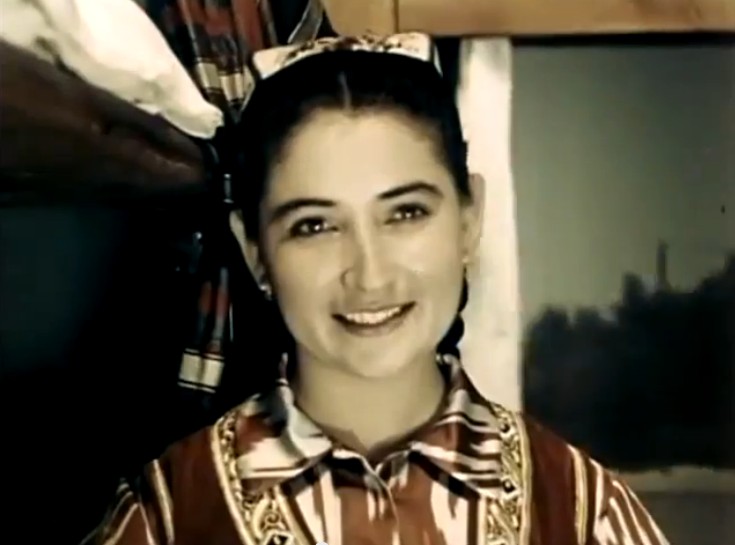
To summarize, the most common ikat design pattern we see in handwoven ikat fabrics is an abstraction, which is an inherent part of ikat making process. Of course, there are trees of life patterns, pomegranate fertility wishes, amulet protection patterns and many many others but to say that this is a design we see in many patterns is just a guess.

